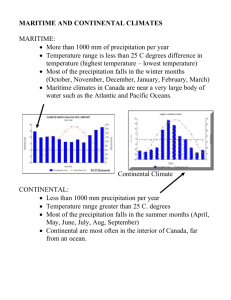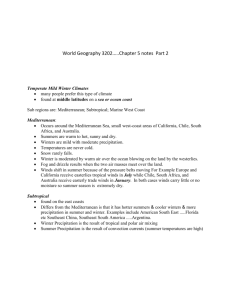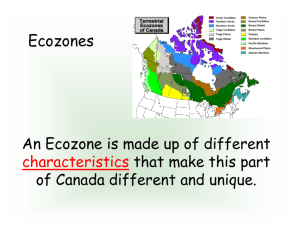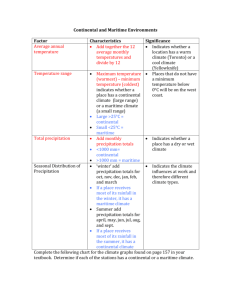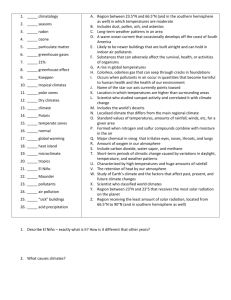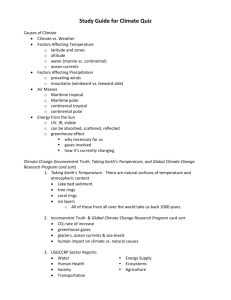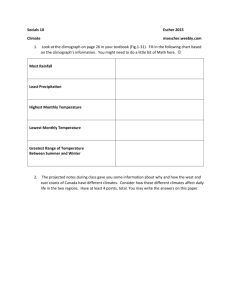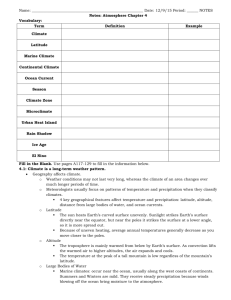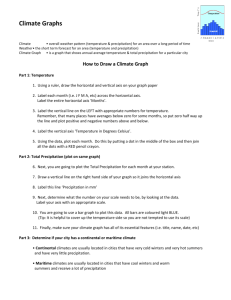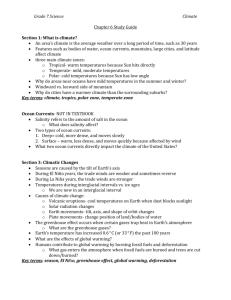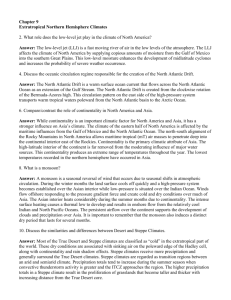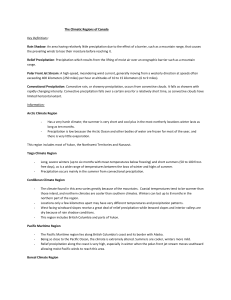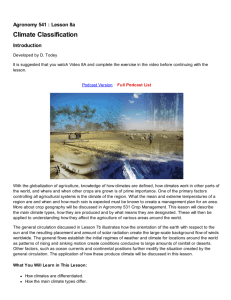Continentality Notes
advertisement
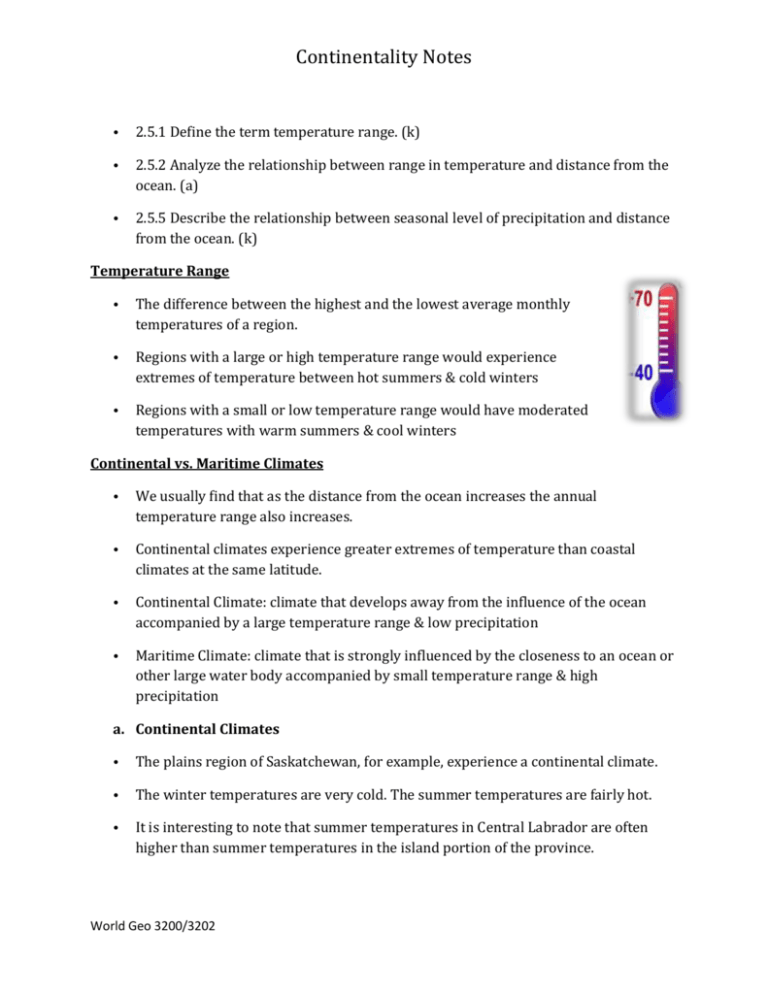
Continentality Notes • 2.5.1 Define the term temperature range. (k) • 2.5.2 Analyze the relationship between range in temperature and distance from the ocean. (a) • 2.5.5 Describe the relationship between seasonal level of precipitation and distance from the ocean. (k) Temperature Range • The difference between the highest and the lowest average monthly temperatures of a region. • Regions with a large or high temperature range would experience extremes of temperature between hot summers & cold winters • Regions with a small or low temperature range would have moderated temperatures with warm summers & cool winters Continental vs. Maritime Climates • We usually find that as the distance from the ocean increases the annual temperature range also increases. • Continental climates experience greater extremes of temperature than coastal climates at the same latitude. • Continental Climate: climate that develops away from the influence of the ocean accompanied by a large temperature range & low precipitation • Maritime Climate: climate that is strongly influenced by the closeness to an ocean or other large water body accompanied by small temperature range & high precipitation a. Continental Climates • The plains region of Saskatchewan, for example, experience a continental climate. • The winter temperatures are very cold. The summer temperatures are fairly hot. • It is interesting to note that summer temperatures in Central Labrador are often higher than summer temperatures in the island portion of the province. World Geo 3200/3202 Continentality Notes b. Maritime Climates • Coastal Newfoundland would experience a Maritime climate. • The winter temperatures would be very mild. The summer temperatures would be warm but not hot. The Moderating Effect of Water • Bodies of water have a moderating effect on land temps • Oceans & large lakes heat up & cool down more slowly than the surrounding land • In summer, water remains cooler than land surrounding it. Winds from the water cool the surrounding land • In winter, bodies of water retain their heat & are warmer than the surrounding land • Winds blowing off the water warm the surrounding countryside • Therefore, maritime locations near a large body of water, have cool summers & milder winters than continental locations far from the water body Climate Graphs • You will need to understand climate graphs to analyze climate statistics. • The left scale indicates the temperature and it is graphed as a line, blue is common. • The right scale is for precipitation and is graphed as a bar graph, red is common. World Geo 3200/3202
